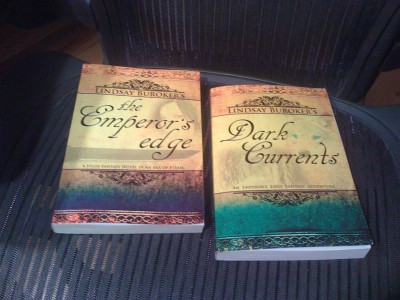 The main reason so many independent are doing well right now is the coming of the ebook. Well, the ebook has been around for a while, but with iPads, Kindles, Nooks, etc., we finally have a convenient way to read them. Because it doesn’t take resources to make copies of ebooks, we can put them out there at reasonable prices, often undercutting the traditional publishers who must still pay the costs associated with maintaining offices and having employees.
The main reason so many independent are doing well right now is the coming of the ebook. Well, the ebook has been around for a while, but with iPads, Kindles, Nooks, etc., we finally have a convenient way to read them. Because it doesn’t take resources to make copies of ebooks, we can put them out there at reasonable prices, often undercutting the traditional publishers who must still pay the costs associated with maintaining offices and having employees.
But what about those paperbacks? Not everybody has an ebook reader, so does it make sense to publish physical copies of your books?
Though I don’t talk about them much, my first three Emperor’s Edge novels are available as paperbacks at Amazon (and they should be at B&N too–I have a customer support ticket out at CreateSpace to see why they’ve disappeared over there). That said, I wasn’t terribly speedy in getting the paperbacks out there. The economics are such that you make more on a $3.99 ebook than you do on an $11.99 paperback, at least when you’re using print-on-demand technology (the way most self-publishers go these days).
And, as you might guess, it’s easier to sell a $3.99 ebook. With POD publishing, you can’t get paperback prices down to the point where they’re competitive with mass market paperbacks selling at $8 or so. In going through CreateSpace, $11.99 was as inexpensive as I could price my books without losing money (and I’ve heard it’s a similar scenario with other POD publishing companies).
There also tend to be additional costs associated with making hard copies. Unless you’re handy and can do everything yourself, you’ll need to pay for formatting (a different way of formatting than for ebooks) and additional cover art (you probably only commissioned a front cover for your ebook, but you’ll need a spine and a back for a paperback version). Then there are a few fees associated with CreateSpace. It’s free to upload your files, but you’ll have to pay $25 (it used to be closer to $40) for a plan that gets your book into more stores than Amazon. You’ll need to order a proof to look over before okaying the book for sale, too, though that’s not a huge cost (perhaps $10 including shipping).
Overall, it might cost $250 or so for each paperback book you put together (again, I’ve seen people who learn to do everything themselves, which brings the costs down to closer to $30).
So, is it worth making print copies? Will you sell enough copies to break even?
As you might guess, it’s going to depend on a few things. I make about $50 a month from paperback sales (about twice that over Christmas this past year), and that’s not much compared to what I make from my ebook sales ($X,XXX/mo). But I also don’t do anything to promote my paperbacks.
I’ve met other people who buy copies en mass and hand-sell them at conventions, renaissance fairs, and the like. You can typically purchase author copies for around $5, so there’s money to be made if you turn around and sell them for $12 or more. When I visited fellow indie Gretchen Rix in Lockhart, Texas, she had talked a number of small businesses in town into selling her book, and I believe she also has copies at Book People (a large indie bookstore) in Austin. If you don’t mind dealing with shipping hassles, you can sell your books directly from your own website too.
Even at my $50 a month, I’ve earned back the “start-up costs” of creating paperbacks of my books. Most of those costs are one-time, so you have the life of the book to make your money back.
That said, if you’re struggling to sell three ebooks a month at $2.99, you may not yet have the fan base built up to make paperbacks worth it. I waited until I had people asking me about physical books before I made the jump. In the end, it was more about making sure my books were available in all formats for the convenience of the readers than about adding a revenue stream.
What do you think? If you’re an author, have you found it “worth it” to create paperback versions? If you’re a reader, have you purchased paperback versions from indie authors, despite the extra cost?
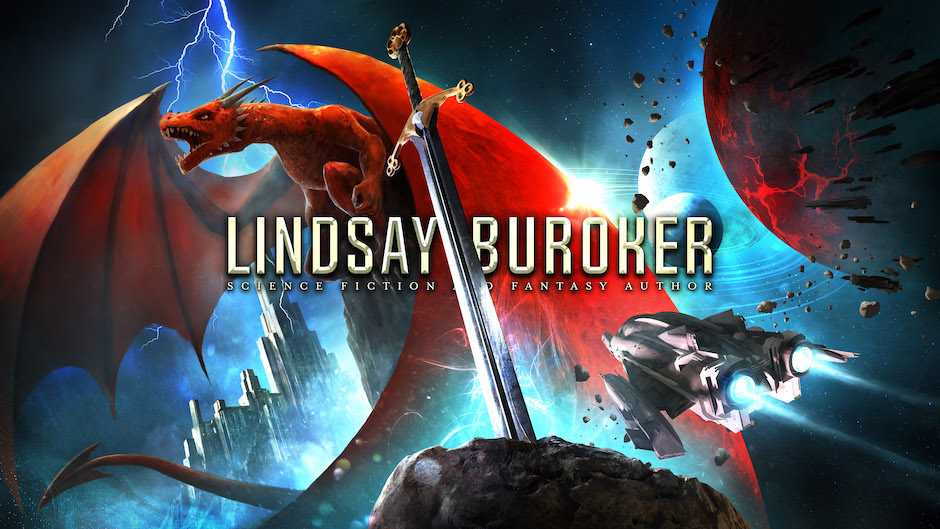
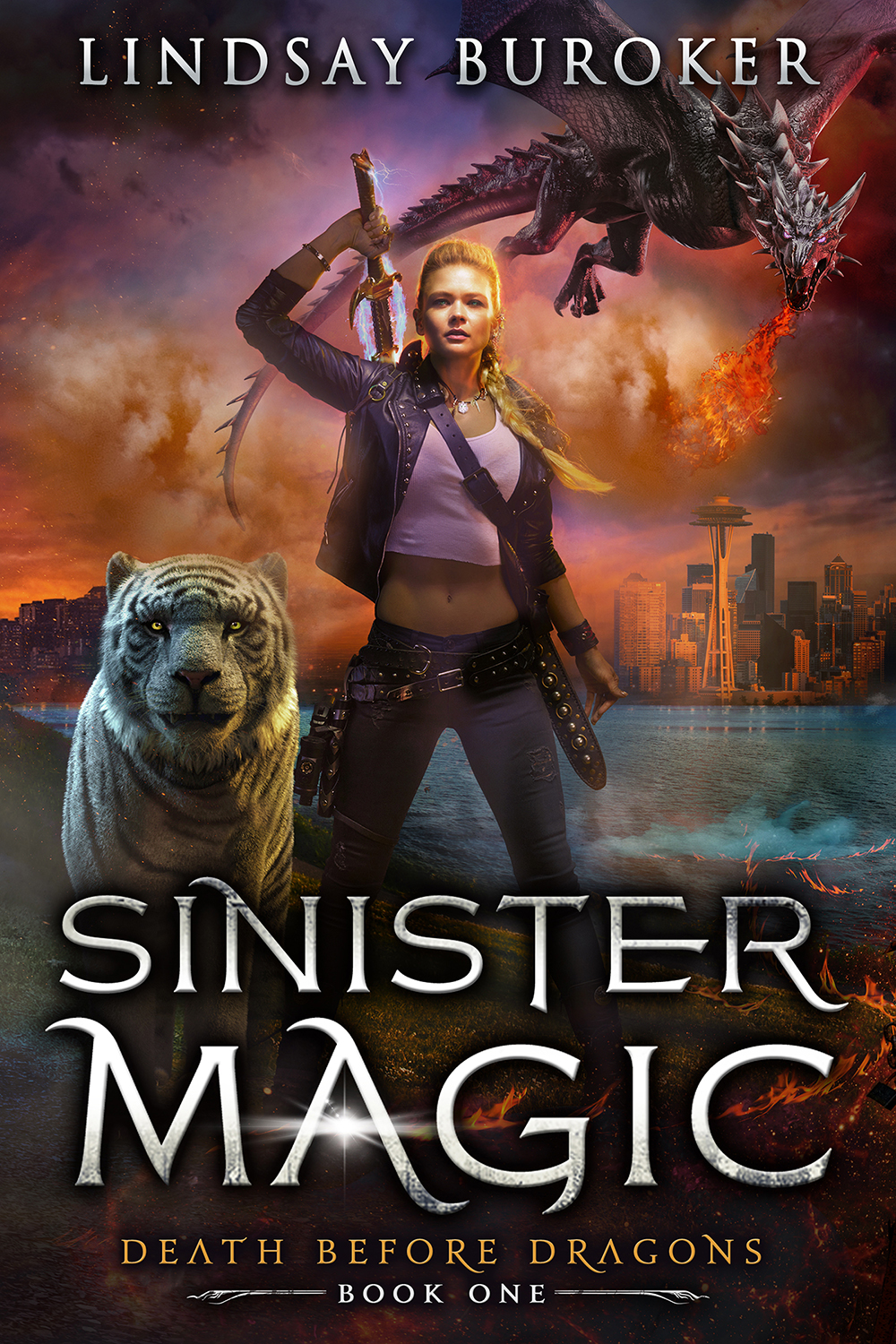
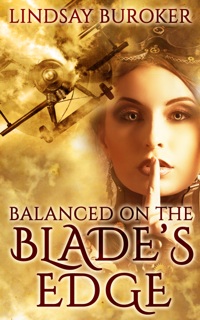
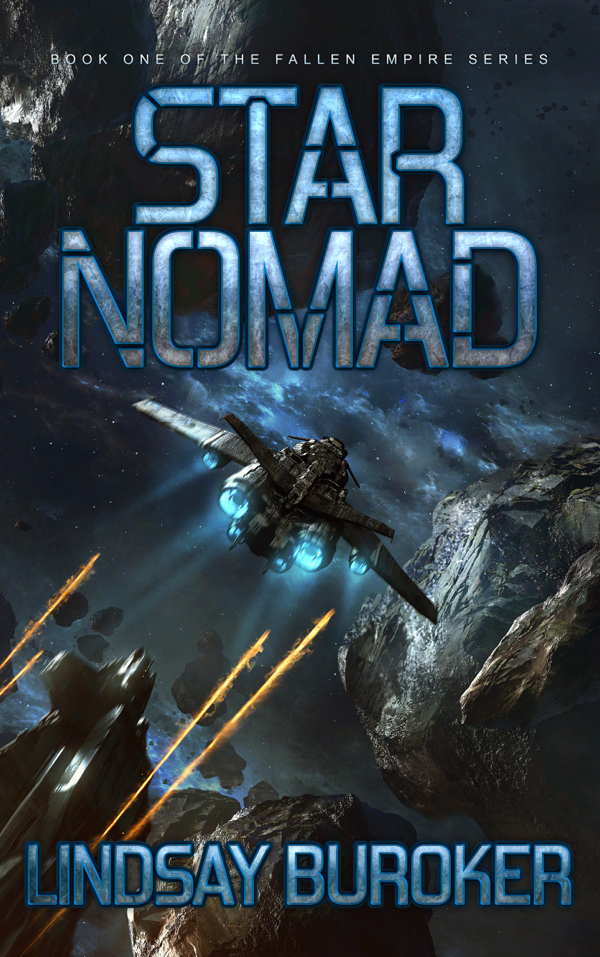
There is a good reason to have a print edition available through Amazon. You will get better free advertising. Amazon regularly sends out “Best Selling [insert genre category here]” emails. These are always to print editions (they also send out similar emails for ebooks). What is interesting is that “best selling” includes books that get their sales almost exclusively through ebooks.
For example, I received a “Best-Selling Historical Mysteries” email. Every link in the email was to the print version of the books, even though I know some of those books have almost non-existent sales in print. For example, M. Louisa Locke says on her blog that her book sales are almost all ebooks, but links to the print editions of her books were in this email.
I’m not surprised by this but glad to know it. Did you notice how Amazon recently changed its price listings with the print copy’s price serving as the default? So if a print retails for $15 and the ebook for $5 it will list the ebook with a “when purchased you save $10”. They clearly favor ebooks.
After my first print sale post successful KDP promotion of Storm Dragon they made a slight discount of my print edition.
I did print editions within a month of putting my books up, and the cost was little since Pepper and I together can manage all the necessary book making skills. But since our sales were very thin until recent KDP Select promotions, we didn’t make much of anything with them. Could have waited. They were good for friends that wanted the books but weren’t buying ebooks yet and for getting some review copies out and a little bit of attention with Goodreads giveaways. I make more on UK ebook sales than I do for print copies.
Ah, I should be hiring you guys to do my formatting. 😉
Yes, I forgot to mention that Goodreads giveaways can only be done with paperbacks, so that’s another reason to consider a dead-tree version. You get quite a bit of publicity there for the cost of mailing someone a copy of a book.
If you need some done in the future, all you have to do is ask and if we aren’t swamped, I’ll quote a fair price. I could use the money to buy new layout software 🙂
Oh, and I should have given away more copies since all three copies I gave away resulted in a 4-5 star review.
I’m in the prelim stages of figuring out my self-pub plan, and I’ve always felt like print HAD to be part of it. But the question that keeps coming up for me is, if I do a print edition, how will I get it into the places I want? Namely, bookstores — indie or otherwise. If it’s just allowing for a print option for people to buy online, that’s cool and all, but I wonder if there’s a way to get the books out there, you know?
Hi Alex,
Others would know more about this, but I believe it’s a matter of talking to the individual bookstore owners/managers and asking them to carry copies. Bookstores do seem to like to highlight local authors, and some people have luck with this.
You might also be interested in an interview I did a few months ago with a librarian (she talks about how to get libraries to carry your self-published titles): https://www.lindsayburoker.com/interviews-success-stories/getting-your-self-published-book-into-the-library-tips-from-librarian-marlene-harris/
Thanks, Lindsay! This is helpful!
Lindsay,
My experience pretty much tracks your own. I did the CreateSpace POD mainly just to have a print book available for folks without ereaders. I never figured to make money on it, especially since my debut thriller was +400 pages and relatively pricey to print.
POD sales are a tiny fraction of ebook sales, but I am making around $50 -75/month on it and have covered costs, so I’ve got no complaints. There is also the thing you mentioned about GoodReads, and the fact that there are few reviewers out there who won’t accept ebooks (they’re fading fast, but they’re out there).
I’ll probably do a paperback on all future books as well. It’s not that difficult and it does have a few advantages.
Thanks for a great site,
Bob
Sometimes with self-publishing, I feel like a miner in a gold rush. $250 for formatting? Why? Formatting isn’t any harder than formatting for an ebook: you need to put some page breaks in and maybe move the chapter headings around, but if your Word file was clean enough to create an ePub, it shouldn’t be challenging. The review process at CreateSpace makes it easy to see if you have any problems.
And the cover template that CreateSpace provides makes it pretty simple to make an extended cover version. I did mine in Powerpoint.
Even the $25 for extended distribution is optional, although it sort of makes sense to spend that money so that the option is there for bookstores and libraries.
I made a print edition mostly so I could give a few copies away to family and friends who wanted paper, with no expectation of selling any beyond the ones I purchased myself. I would have thought it worth the effort, since it didn’t cost me anything except the $20 I spent on copies — oh, CreateSpace was doing a deal, a free proof with free shipping, so I truly did pay nothing at all until I bought myself a few books — but it’s a nice side benefit (IMO) that Amazon then makes the ebook look like a bargain.
It just depends on the person. If you don’t mind spending time doing formatting and can make your own cover, then you can certainly save money. I have no patience for doing those things, and feel my time is better spent writing (that’s ultimately what pays the bills), so I pay what I feel is a fair price to have someone do the busy-work for me. ($150 for covers and interior formatting. I threw $250 out as a ballpark number, as I don’t know what others pay for formatting and cover art, and I wanted to include the CreateSpace fees — yes, I believe it’s worth it to have one’s books available at stores other than Amazon).
I do my own formatting because it comes easy to us and we enjoy it. If I didn’t enjoy it, I’d farm it out once I had enough income. As it is, I do a little bit of formatting for other people, mostly so I can buy new fonts or software to improve my own experience.
Hello, Lindsay.
Originally I was primed to go all electronic, but my sister talked me into POD copies of my two novels The Cowboy’s Baby and Arroyo, and insists every novel I write have a POD paperback available.
If nothing else, it’s worth it to have a physical copy for your own personal library, and to have one for your town’s public library as well. The total cost of the CreateSpace POD using outsourced cover and formatting was less than $300.00.
We will probably make our money back from Arroyo, but The Cowboy’s Baby came from another POD service and was too costly (but still worth it) for us to ever break even on it.
We buy author’s copies and mainly sell from local fairs and at book signings and a few from local stores and at BookPeople in Austin. Are we selling a lot? No, but then my books aren’t the sort that would sell in the thousands to begin with.
I’d say don’t plan on making money off them. Instead, see them as an investment in advertising and goodwill. Plus they look mighty fine on your own bookshelves.
Thanks for chiming in, Gretchen! I still need to run some copies of my books down to my local library. Lazy author, hah.
I also use CreateSpace, and the biggest cost for me is shipping proof copies to myself because I live in the UK. (I’m too impatient to wait for the 6 week shipping option, which is more affordable.)
I only sell a smattering of books, but I have broken even on the expense. But… I think when the listing shows up on Amazon, it just looks better if there’s a print edition available. I don’t know why, but if I see a book is e-format only, I judge the listing differently. I know it makes no sense, but I’m talking as an amazon customer here, not a writer. So, if *I* feel that way as a shopper, I assume others might as well.
So for that reason alone, if I break even on the deal, I don’t mind spending the one day it takes me to format the books. I found a fabulous video on YouTube that explains an incredibly easy method for getting perfect results. (Text Layout for Self Publishing by user: storyhack, if anyone wants to find it on YouTube.)
That’s a good point, India. I think having a print book available as well can add legitimacy to an ebook listing. Though I wonder what people think about the price difference when it’s something like 99 cents to 12.99!
The way Amazon started doing their listings recently it will say for the ebook version: you save $12.
You’re right – that really makes your ebook look like it’s in the bargain bin. There’s a simple solution to that: don’t price the ebook of your novel at $.99. That said, right there is another reason to have a print version. If you’re hesitant about pricing above $.99 or $2.99, this gives a good way to get feel better about doing so. Because if you have that $12.99 (or higher) paperback on the sales page, suddenly the $5.99 or $6.99 ebook looks like a really good deal, since the customer’s saving $6 or $7. As opposed to the book just sitting there, alone and lonely, at $.99.
Thanks for this post, Lindsay. I go back and forth on releasing print versions and it’s nice to read something realistic on the subject. Maybe later this year I will go for it.
I’m currently also debating going paperback, since I’ve had the first couple of requests now. I don’t have anywhere near your sales, but I am getting a couple hundred a month. With me, the resistance is mostly just the extra work involved.
I have a background in traditional publishing, so basically it never occurred to me to not do a paper book. I do it myself, so it’s not expensive, but it definitely takes a lot longer to lay out a paper book than to format an e-book–you have to worry about widows and loose lines and proper word breaks and a million other teeny-tiny details.
I do question whether it’s necessary in the short term, especially if you are short on cash and time. Long term, I think it is worth it because it will get you access to outlets (libraries, book stores, sci-fi cons) that you wouldn’t tap otherwise. It’s kind of like audiobooks–there’s an up-front cost, but there’s also an audience for it.
Eventually you’re going to be leaving money on the table if you don’t have a paper book out. I read Locke’s “Maids of Misfortune” and liked it, and my sister loves mysteries. She doesn’t have an e-reading device, so I bought the paper book for her, which means that Locke has gotten two sales from me. Now I’m reading “The Mill River Recluse,” and if I though my sister would like it, that’s just too bad, because Chan doesn’t have a paper book available.
Most selfpubbers aren’t even worrying about widows and word breaks because they’ve never been exposed to the more complex process that is print publishing. A lot of books are getting done in Word! I was only able to do one of my print books with professional layout software. The others I had to use LibreOffice and a lot of mental effort and careful settings. Not perfect but close enough most readers won’t notice. Good software makes it far easier.
Yeah, professional layout software is soooo expensive. I actually lay out mine in Word, but it takes a LOT of effort (forcing lines down with invisible text and the like) to get it to look good.
There are some obscure options in Word’s settings that will lead to better kerning and whatnot. A google search will reveal some articles about maximizing Word for layout. I used LibreOffice because its kerning and line breaks were a little better.
I don’t know if the paperback version is worth the effort. I’ve sold exactly one copy of one of my paperbacks in the year I’ve been self-publishing, to someone in Philadelphia on Christmas Day. (Don’t you just love these tracking systems?:)
I’ve had a couple of people ask me about physical copies, but it seems pretty daunting to me to go through, and your point about waiting until writers have a fan base before trying it makes me pause and question going that route–yet.
I’ve found print to be great. For my first novel I did ebook and print at the same time and have sold more print than ebooks (close to 200 print in the first few months).
Now, I should qualify that. Most of those print sales have been done by hand to family and friends and friends of friends. I am old enough so that most of this crowd doesn’t own an ereader.
The added benefit is having something to hold in your hand and being able to sign books.
I’m going to put the novels of series in paperback. I figure I can sell them at a few places, and it’d be great to have my own book on my bookshelves. I don’t expect it to make a lot of money, but they’re good for giveaways, etc …
The first stories in the series are novellas, so I’m going to add them to the first paperback. Hopefully, it will all work out. We’ll see.
I used to LOVE paperbacks. But ever since I got a Kindle I stick to ebooks. Mostly because I have a library of 1300 books on my device and it’s so much easier to handle.
Then again, I have certain book series that I still get in paperback because HELLO, they are that awesome. I would probably try to get all my books in paperback, just so that I have them on my own shelf.
Plus: for some reason people are more willing to accept “writer” as a profession if they have physical proof in form of a paperback. o.O
I love all the different views. I’ve been debating between the two. I think I will do createspace after I do the ebook. My main concern is editing. Is it a good idea to give out copies of the manuscript to non professional editors for a fresh eye view to aid in finding errors?
Yes.
The reality is that what matters most is effective grammar and clear communication. 95% of your readers don’t know any of the nitpicky grammar rules and will never notice those mistakes. Not saying you shouldn’t strive for perfection. I’m just saying you shouldn’t underestimate the power of an average reader. The mistakes they find are the most important ones to fix!
I write clean copy, have a first reader who is also a writer, and I pay a friend for proofreading which mostly involves finding my logic problems. I write pretty clean copy. I can’t yet afford fancy editing. If I could, I would.
Print books. You know what? We haven’t sold a single print book, but you know what else? I don’t care. We specialize and really push ebook sales because they’re our ‘mass markets’ of today and the future. They’re cheap, easy to read with new technology, but offer the same story for less.
Print editions of our books are for those people who may read our ebook and think to themselves, ‘you know what? I’d really like to buy a hard copy of this.’ So, it’s there when they want to get it. They’re not mass market size anyway, but Tradepaper size, (as every book is through createspace. Most tradepapers go for 13-15 bucks a pop. $11 is actually a good deal 🙂 So don’t worry over comparing it to mass market prices) Our books, which usually hover between 500-600 pages, are either $14.95 or $15.95. That’s a good price for the length, without under selling ourselves, so I’m not worried about selling copies when people actually start buying them.
Not too concerned about paperback sales regardless, though. That would be like a cherry on top of a five-layered devil’s food cake with cream cheese whipped frosting. Ebooks are the cake and the frosting… besides, we make more per ebook sale than hard copy anyway. 🙂
Great post!